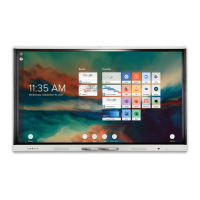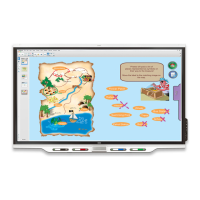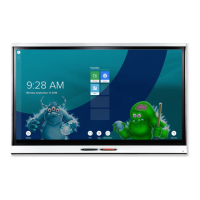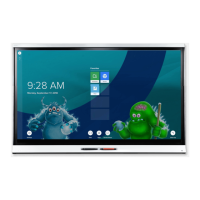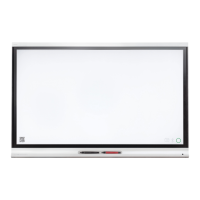Chapter 3
Connecting computers and other devices
smarttech.com/kb/171744 52
No. Connector Connects to Notes
1 USB 3.1 Type-C USB Type-C input (video,
audio, and touch)
See Connecting room computers
and guest laptops on page31 and
USB cables and connectors.
NOTE
The USB 3.1 Type-C connector
can also provide 15 W of power
to connected devices.
2 HDMI 2.0 in HDMI 1 input (videoandaudio) See Connecting room computers
and guest laptops on page31 and
HDMI cables and connectors.
3 USB 2.0 Type-B Touch input Use this touch input with the HDMI
video and audio input on the front
of the display.
See Connecting room computers
and guest laptops on page31 and
USB cables and connectors.
4 USB 2.0 Type-A Supported USB drives,
peripherals, embedded OS,
and other devices
See Connecting USB drives,
peripherals, and other devices on
page41 and USB cables and
connectors.
This connector can be used to
connect peripherals such as a USB
mouse, keyboard, or a USB drive
for use with the currently selected
input (such as the internal Android
system, a PC in the OPS slot, or an
externally connected PC).
5 USB 3.2 Gen 1 Supported SuperSpeed (SS)
and USB 2.0 drives,
peripherals, and other
devices to OPS (if installed)
See Connecting USB drives,
peripherals, and other devices on
page41 and USB cables and
connectors.
This connector is always connected
to the display’s OPS slot. It can
connect peripherals (such as a USB
mouse, keyboard, or USB drive)
only to a PC installed in the
display's OPS slot.

